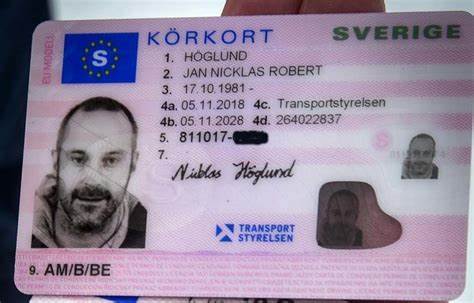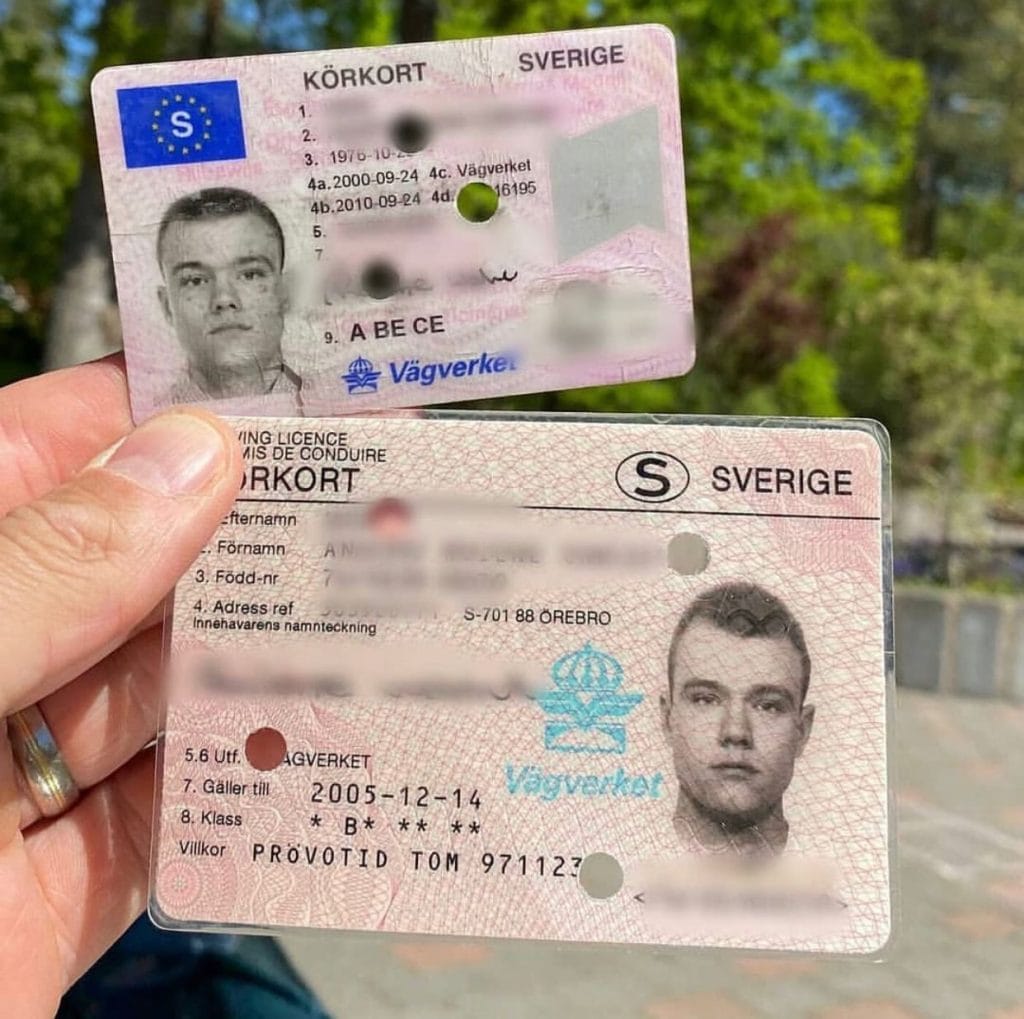11 Creative Ways To Write About Driver's License Without Taking A Driv…
페이지 정보

본문

Navigating the World Without a Driver's License: Exploring Alternatives and Implications
In today's world, where mobility is a cornerstone of every day life, the idea of living without a driver's license may appear daunting. However, for some individuals, the choice to pass up a driver's license is a mindful option driven by numerous elements, including environmental issues, cost, and individual preference. This short article looks into the options to driving and the implications of living without a driver's license, offering a comprehensive guide for those considering this way of life.
Comprehending the Decision
Picking not to have a driver's license is a personal choice that can originate from several reasons. For some, it's a dedication to reducing their carbon footprint and promoting sustainable living. Others discover the cost of owning and preserving an automobile excessive, while some simply prefer the convenience and freedom of other modes of transport. No matter the inspiration, living without a driver's license requires mindful planning and a desire to adjust.
Alternatives to Driving
Public transport
- Buses and Trains: Public transportation systems, such as buses and trains, are frequently the most reliable and cost-efficient alternatives. They are available in the majority of city areas and offer a structured way to browse cities and rural areas.
- Train and Light Rail: In larger cities, subways and light rail systems use quick and effective travel, often bypassing heavy traffic and reducing travel time.
Ride-Sharing Services
- Uber and Lyft: These popular ride-sharing apps provide on-demand transport, making it easy to get around without a car. They are particularly helpful for late-night travel and in locations with limited public transport.
- Carpooling: Joining or forming carpool groups can reduce expenses and ecological effect. Lots of neighborhood platforms and apps help with carpooling for routine commutes.
Bicycles and E-Scooters
- Bicycles: Cycling is a healthy and environment-friendly way to take a trip, specifically for shorter ranges. Numerous cities have actually devoted bike lanes and bike-sharing programs to motivate this mode of transportation.
- Electric Scooters: E-scooters are a trendy and convenient option for fast, brief trips. They are frequently offered through rental services in city locations and can be an enjoyable alternative to standard modes of transportation.
Strolling and Jogging
- Walking: For those residing in walkable communities, walking is a basic and reliable method to remain active and get around. It's complimentary, requires no special devices, and is good for the environment.
- Jogging: Similar to strolling, running can be a healthy and inexpensive way to take a trip, especially for brief distances.
Electric and Hybrid Vehicles
- Electric Scooters and Bikes: For those who still desire the convenience of an individual vehicle but are worried about the environment, electrical scooters and bikes are a feasible option. They are low-maintenance and produce fewer emissions.
- Hybrid Cars: If the decision to avoid a driver's license is primarily due to ecological concerns, however the requirement for a car is inescapable, hybrid cars provide a happy medium. They combine traditional fuel engines with electric motors to lower fuel intake and emissions.
Telecommuting and Remote Work
- Work from Home: Many companies now provide remote work alternatives, permitting workers to work from home or other places. This can considerably minimize the need for everyday commuting and the associated expenses.
- Virtual Meetings: Technology has actually made it possible to perform service meetings and other interactions practically, more lowering the need for travel.
Ramifications of Living Without a Driver's License
Financial Savings
- Reduced Vehicle Costs: Not having a car means avoiding expenses such as car payments, insurance coverage, maintenance, and Köpa C Körkort a2 köp Sverige körkort (https://fd-Telecom.ru/) fuel.
- Public Transportation Costs: While public transport does have expenses, they are generally lower than those connected with owning a car.
Environmental Impact
- Lower Carbon Emissions: By avoiding making use of personal cars, individuals can significantly lower their carbon footprint, adding to a more sustainable environment.
- Decreased Traffic Congestion: Fewer vehicles on the road can lead to lowered traffic jam, making travel more effective for everybody.
Health Benefits
- Increased Physical Activity: Using alternatives like strolling, running, and biking can enhance physical health and psychological wellness.
- Reduced Stress: Avoiding the daily inconveniences of driving, such as traffic and parking, can cause a more relaxed and hassle-free way of life.
Social and Community Engagement
- Neighborhood Connections: Relying on public transport or ride-sharing services can promote a sense of community and social interaction.
- Assistance for Local Businesses: Walking or cycling to local services can assist support the regional economy and decrease reliance on large, ecologically unfriendly corporations.
Legal and Practical Considerations
- Identification Issues: In many nations, a driver's license serves as a primary kind of identification. People without a license might need to carry alternative kinds of ID, such as a passport or state-issued ID card.
- Travel Restrictions: Without a driver's license, travel to remote locations or places with limited public transport can be tough. Preparation ahead and using alternative transport techniques is vital.
FAQs
Q: How can I get around if I reside in a backwoods without a driver's license?
- A: In backwoods, choices like ride-sharing services, carpooling, and public transport may be restricted. Consider joining community groups or online platforms to find regional carpooling alternatives. Electric scooters and bikes can likewise work for much shorter distances. Additionally, lots of rural areas have neighborhood transportation services that can be accessed for essential trips.
Q: Can I still take a trip internationally without a driver's license?

- A: Absolutely. A driver's license is not needed for many international travel. However, you might need a passport or other types of recognition. For nations where driving is essential, you can lease a car with a legitimate driver's license or use regional transport services.
Q: What are the best apps for finding ride-sharing and carpooling options?
- A: Popular apps for ride-sharing consist of Uber, Lyft, and Bolt. For carpooling, Waze Carpool, Ridester, and Scoop are highly advised. These apps typically provide real-time info on readily available trips and assist link you with drivers heading in the exact same instructions.
Q: How do I handle without a driver's license if it is required for numerous kinds of recognition?
- A: In numerous locations, a state-issued ID card or a passport can serve as a main form of identification. It's likewise an excellent idea to carry several types of ID, such as a charge card or a citizen registration card, to guarantee you are gotten ready for numerous situations.
Q: Are there any health threats associated with utilizing public transportation?
- A: Köp Europeiskt körkort While public transport can expose individuals to a greater threat of transmittable illness, especially in crowded conditions, the benefits typically outweigh the dangers. Practicing great hygiene, such as cleaning hands routinely and using a mask, can assist alleviate these risks. Additionally, many public transport systems have implemented security procedures to secure guests.
Q: What are the environmental benefits of not driving a car?
- A: Not driving a car can considerably decrease your carbon footprint. Vehicles are a major source of greenhouse gas emissions, and by going with public transportation, cycling, or walking, you can add to a healthier environment. This likewise helps in reducing air pollution and traffic jam, enhancing overall lifestyle.
Living without a driver's license is a practical and often advantageous choice for numerous individuals. By exploring and utilizing alternative modes of transport, one can save cash, minimize their ecological impact, and enhance their health and wellness. While there are challenges, such as navigating recognition and travel problems, the benefits frequently make the effort worthwhile. Whether driven by individual worths or practical factors to consider, the choice to forgo a driver's license can lead to a more sustainable and satisfying lifestyle.
Additional Resources
- Mass Transit Apps: Transit, Moovit, Citymapper
- Biking and Walking Apps: Strava, MapMyRide, Google Maps
- Community Carpooling Platforms: Waze Carpool, Ridester, Scoop
- Remote Work and Telecommuting Tools: Zoom, Microsoft Teams, Slack
By welcoming these options, individuals can create a way of life that lines up with their worths and needs, contributing to a more sustainable and linked world.
- 이전글The 10 Scariest Things About Driving Lessons Scunthorpe 25.04.18
- 다음글10 Wrong Answers To Common Driving License Preparation Online Questions: Do You Know Which Answers? 25.04.18
댓글목록
등록된 댓글이 없습니다.
